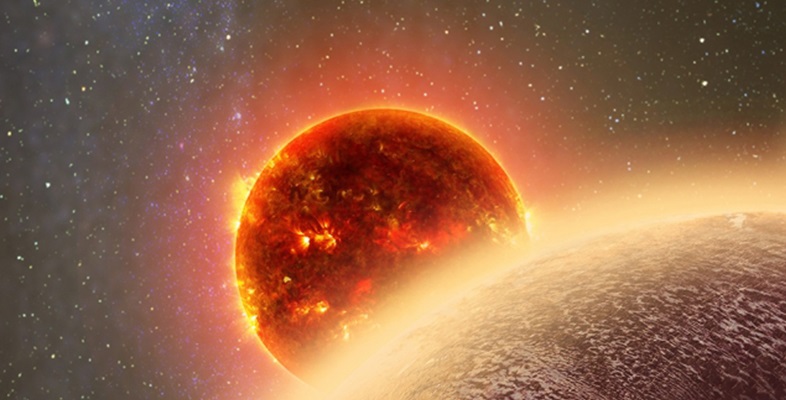The orbital inclination
Once again we are going to return to the interactive application. This time you will see how the apparent motion is affected by our viewing angle. Astronomers call this viewing angle the orbital inclination. This is measured in the opposite way to what you might expect – an orbital inclination of 0° means that we on Earth are viewing the orbit face-on, like we did in Section 3.5, whereas an orbital inclination of 90° means that we are viewing the orbit edge-on.
Activity _unit4.4.3 Activity 5 Orbits from above
This interactive application now shows both a 2D view, looking down on the orbits from above, and a foreshortened 3D view. Remember that if you work with the application in a separate page (by clicking on the [ ] button) you may need to adjust the magnification in your browser to view both panels.
This application has a new slider, labelled orbital inclination (i). The mass ratio and the size of the orbit are fixed to allow you to concentrate on the effect of changing the orbital inclination.
The purple line in the 3D view is the direction to the observer, using a telescope to make measurements. You are looking from a different perspective as if you were in a spaceship near the star. At i = 0° the observer is looking down on the system, as in the viewpoint of Figure 13. At i = 90° the observer is looking from a direction that aligns exactly with the orbits. Use the slider to vary the value of the orbital inclination, i. You may find it helpful to move the orbital plane around to more clearly see the orbital inclination - the angle between the perpendicular to the orbital plane and the purple line to the distant observer. To do this, click on the orbital plane and drag it around until you are viewing it nearly edge-on.
Click the play button to set the planet and star in motion.
From which orbital inclination will the radial velocity be the largest? In other words, where would you position the observer so that the star’s motion towards and away from them during its orbital motion is as pronounced as possible?
Answer
For orbital inclination i = 90°, the star will move exactly towards and exactly away from the observation point once per orbit. An observer positioned here will see a value of radial velocity that gives the full extent of the orbital motion.
